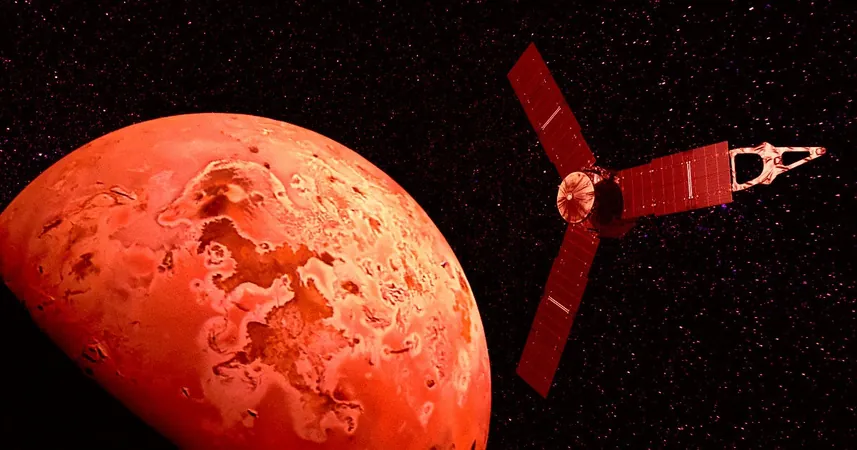
NASA's Juno Spacecraft: The Key to Intercepting a Mysterious Interstellar Visitor?
2025-07-30
Author: Chun
A Cosmic Intrigue: The Arrival of 3I/ATLAS
This month, astronomers made a thrilling discovery: a bizarre object is speeding towards our solar system from the depths of interstellar space. This rare event marks only the third confirmed interstellar visitor since 2017, igniting excitement and curiosity among scientists and enthusiasts alike.
Could It Be an Alien Probe?
Harvard astrophysicist Avi Loeb, known for his bold theories on extraterrestrial life, speculated that this object, named 3I/ATLAS, could potentially be an alien probe sent by an intelligent civilization. This tantalizing idea stirs the imagination, reminiscent of themes from sci-fi classics like Stanley Kubrick's "2001: A Space Odyssey."
Using Existing Technology for a Close Encounter
In an intriguing development, Loeb proposed that NASA's Juno spacecraft, which has been exploring Jupiter since its launch in 2011, might intercept the path of 3I/ATLAS by March 14, 2026. To pull it off, Juno would need to execute a thrust of 1.66 miles per second by September 14, 2025. This adjustment would allow Juno to shift its orbit and get a closer look at this enigmatic visitor.
The Science Behind the Mission
Although this wouldn’t be a traditional rendezvous—given the high speed of 3I/ATLAS—a close approach could provide invaluable data. Juno's suite of scientific instruments could analyze the object up close, potentially revealing its composition and origin.
Decoding the Mystery of 3I/ATLAS
Recent observations from the newly opened Vera C. Rubin Observatory in Chile suggest that 3I/ATLAS is approximately seven miles wide, making it the largest known interstellar object. The consensus among scientists is that it is likely a comet, as its observations indicate a surrounding coma of ice, dust, and gas extending up to 15 miles wide.
The Puzzle of Its Origins
Despite insights gained so far, many questions remain unanswered. Some researchers speculate that 3I/ATLAS originated from the "thick disk" of our galaxy, home to unique star populations. Others suggest that this object could be as old as 3 to 11 billion years, linking it to the formative years of the Milky Way.
Could NASA Take the Leap?
While it's doubtful that NASA will readily implement Loeb's plan to fire up Juno's thrusters, the proposal emphasizes the rare chance to encounter an interstellar object up close. As scientists continue to unravel the mysteries surrounding 3I/ATLAS, one thing is certain: our quest to understand the cosmos is as thrilling as ever.


 Brasil (PT)
Brasil (PT)
 Canada (EN)
Canada (EN)
 Chile (ES)
Chile (ES)
 Česko (CS)
Česko (CS)
 대한민국 (KO)
대한민국 (KO)
 España (ES)
España (ES)
 France (FR)
France (FR)
 Hong Kong (EN)
Hong Kong (EN)
 Italia (IT)
Italia (IT)
 日本 (JA)
日本 (JA)
 Magyarország (HU)
Magyarország (HU)
 Norge (NO)
Norge (NO)
 Polska (PL)
Polska (PL)
 Schweiz (DE)
Schweiz (DE)
 Singapore (EN)
Singapore (EN)
 Sverige (SV)
Sverige (SV)
 Suomi (FI)
Suomi (FI)
 Türkiye (TR)
Türkiye (TR)
 الإمارات العربية المتحدة (AR)
الإمارات العربية المتحدة (AR)